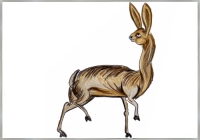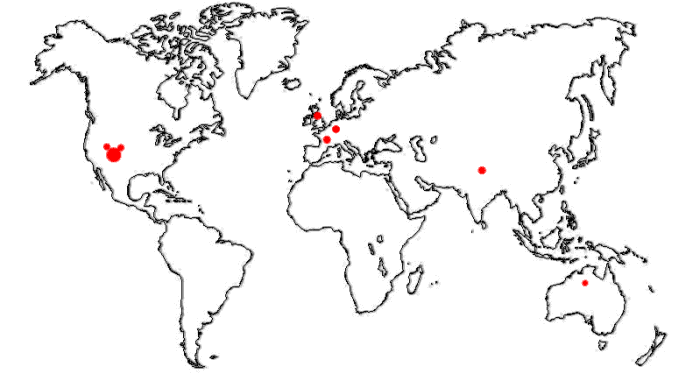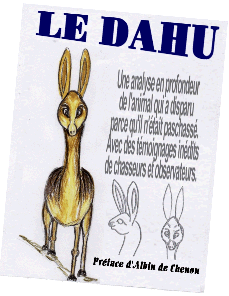










|

~ SAVE THE DAHU ~
Vous pouvez faire quelque chose - Agissez aujourd'hui
The dahu has the appearance of a deer or ibex, but with the principal characteristic that its legs on one side of its body are shorter than on the other side. This enables it to walk upright on the steep slopes of its mountain environment. It can only walk around the mountain in one direction. Observers attribute various differing descriptions to the animal, including the laevogyrous dahu (which has shorter legs on the left side, and thus goes around the mountain counter-clockwise) and the dextrogyre dahu (which has shorter legs on the right side, and thus goes around the mountain clockwise). The two species seldom interbreed.

Today, the dahu is gravely at risk, threatened by lack of interest. The specie has totally disappeared from countries it used to roam and is on the brink of extinction in those where it survives. Something can be done. Join the Save the Dahu Campain and help protect it from extinction.
|
|
Agissez aujourd’hui et gagnez le livre richement illustré sur le dahu, Paradoxe bio-cynergétique!
Remplissez un questionnaire sur l’habitat des derniers dahus de la planète. Aidez à connaître et à faire connaître l’environnement de cet animal unique et sauvez-le de l’extinction. Cliquez sur les liens ci-dessous pour télécharger le questionnaire et étudier les milieux naturels de l’Ouest Américain où les derniers représentants de cette espèce menacée survivent encore.
Questionnaire 1
Questionnaire 2
Questionnaire 3
Explorer l'environnement des derniers dahus
|

|
The gyascutus or guyascutus is a quadruped living in North America of the dahu family. Like its European cousin, its legs are longer on one side than the other to facilitate living on a hillside.
The Hodag inhabits the American state of Wisconsin. Its history and acknowledgement are mainly focused around the city of Rhinelander in northern Wisconsin.
But the highest concentration of dahu related creatures is in the American West :
Sidehill Gougers inhabit the Rocky Mountains. The legs on one side of their body are longer than the legs on the other, allowing them to stand comfortably on sloped terrain. They are sometimes locally known as sidehill badger, sidehill winder, sidehill dodger, sidehill wowser, godaphro, and gyascutus.
|



|





























